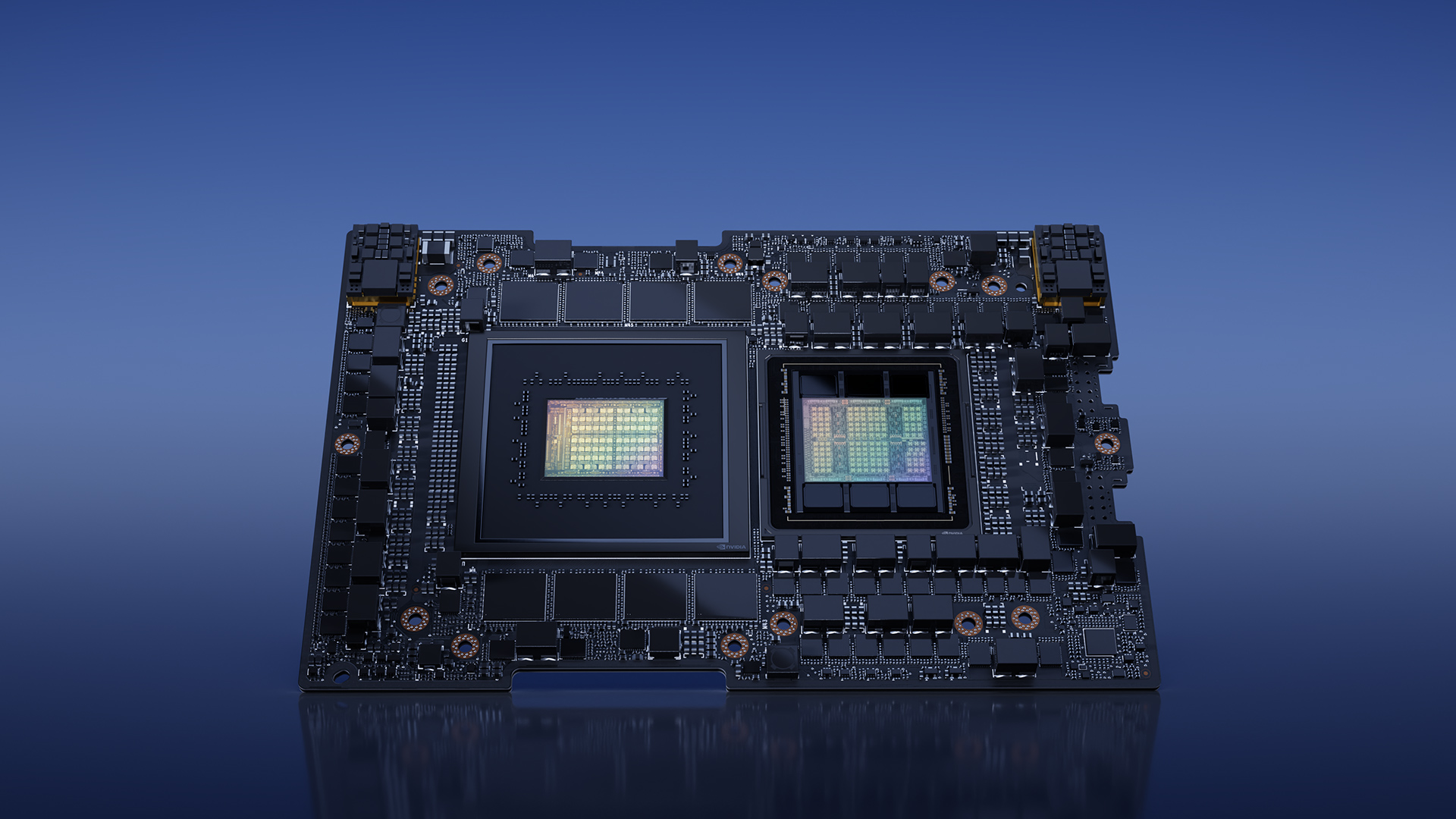 APPS
APPS
 APPS
APPS
 APPS
APPS
Nvidia Corp. and Advanced Micro Devices Inc. are developing new central processing units for Windows computers, Reuters reported today.
The upcoming chips are said to be based on blueprints from Arm Holdings plc.
Nvidia is best known as a maker of graphics cards, but it’s no stranger to the CPU market. In 2021, the chipmaker introduced an Arm-based data center CPU called Grace. It features 72 cores and 117 megabyte of onboard cache.
Nvidia doesn’t sell the chip on its own, but rather as part of a compute module called the GH200 Superchip. The module (pictured) combines a single Grace CPU with a graphics processing unit and up to 480 megabytes of memory. According to Nvidia, it’s designed to speed up artificial intelligence applications deployed in data centers.
Launching a PC processor would give Nvidia access to a large market where it currently doesn’t have a presence. Intel Corp.’s client computing group, which mainly sells PC processors, reported $6.8 billion in revenue for the quarter ended June 1. During the same time frame, AMD generated sales of $998 million in the client chip market.
It’s less clear why AMD would seek to build an Arm-based CPU. The company already offers two separate lines of PC processors, the Ryzen and Threadripper product families, that have won a significant amount of market share from Intel in recent years. As of April, one of AMD’s high-end Ryzen chips reportedly ranked as the world’s fastest gaming CPU.
One reason companies choose to use Arm’s CPU designs is because they’re seen as having an edge in energy efficiency. That’s why practically all handsets ship with Arm-based silicon. However, AMD’s PC processors are already considered to be highly competitive as far as power consumption is concerned.
One factor that may be behind the company’s quest for an Arm-based CPU is software compatibility.
On their own, applications written for Arm chips can’t run on a processor with a different architecture. Running them requires complicated software that slows down the computer on which it’s installed. Any Arm-based CPU that AMD brings to market in the future could make do without such software, which would translate into speed improvements for users.
Currently, Qualcomm Inc. is the only major chipmaker that develops Arm-based processors for Windows machines. The company launched its first entry into the category in 2016. According to today’s Reuters report, Qualcomm has an “exclusivity arrangement” with Microsoft in this part of the chip market that will run through the end of the year.
Nvidia and AMD reportedly plan to launch their Arm-based CPUs as soon as 2025. That timing is presumably influenced by the 2024 expiry date Qualcomm’s exclusivity arrangement with Microsoft. According to today’s report, Microsoft is actively encouraging potential Qualcomm rivals to build their own Arm-based PC chips.
Microsoft’s goal is said to be the development of Windows computers with similar “efficiency” as Apple Inc.’s Macs. Apple ships its newest Macs with internally-developed chips based on Arm designs. Those chips reportedly can’t match the performance of top-end CPUs from Intel and AMD, but they’re considerably more power-efficient.
Microsoft is reportedly encouraging chipmakers to equip their Arm-based PC processors with “advanced AI features.” Nvidia should be particularly well-positioned to deliver such a capability. AMD, for its part, already ships its consumer processors with features designed to speed up machine learning applications.
Support our mission to keep content open and free by engaging with theCUBE community. Join theCUBE’s Alumni Trust Network, where technology leaders connect, share intelligence and create opportunities.
Founded by tech visionaries John Furrier and Dave Vellante, SiliconANGLE Media has built a dynamic ecosystem of industry-leading digital media brands that reach 15+ million elite tech professionals. Our new proprietary theCUBE AI Video Cloud is breaking ground in audience interaction, leveraging theCUBEai.com neural network to help technology companies make data-driven decisions and stay at the forefront of industry conversations.